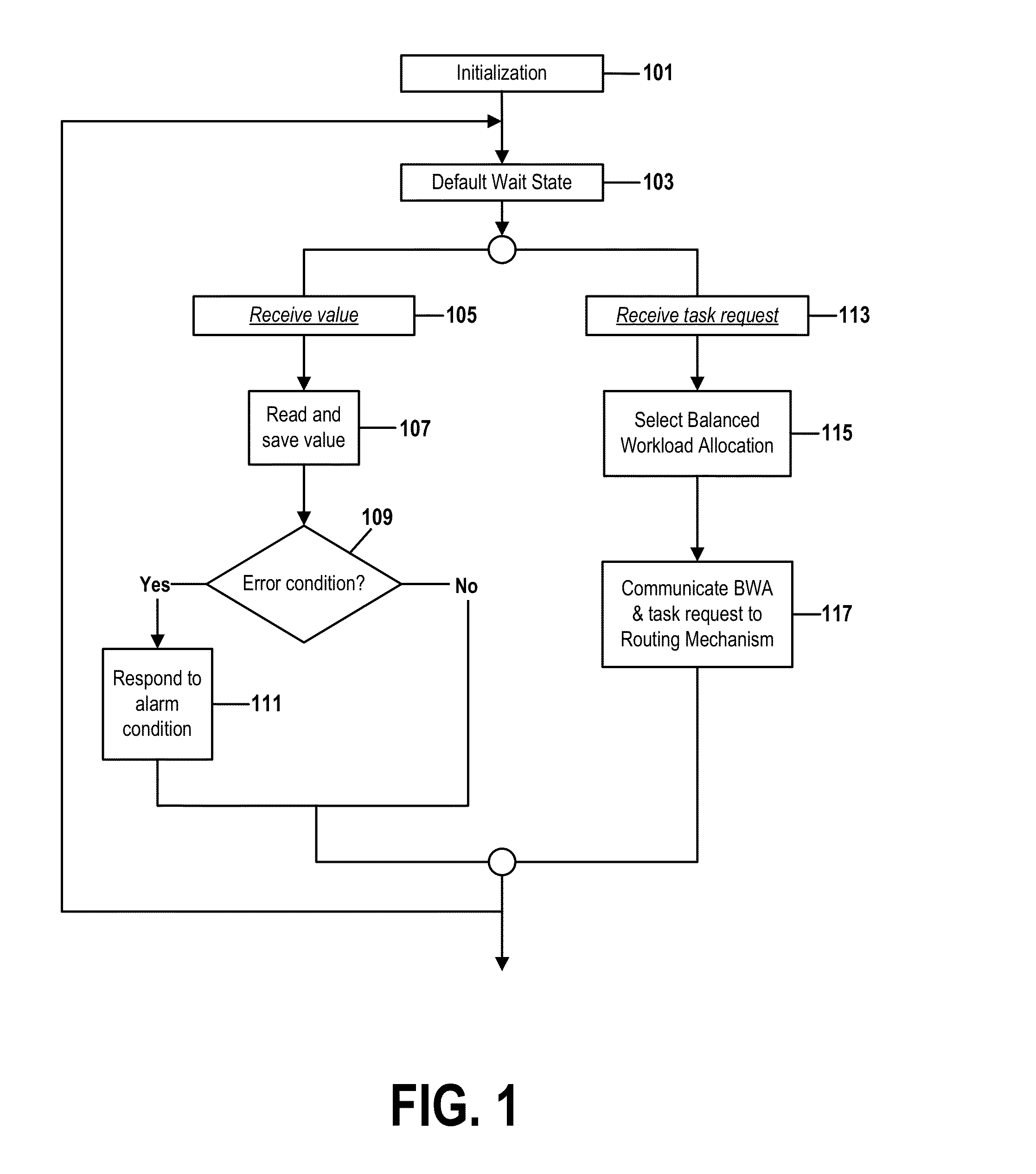Environmentally aware load-balancing
a load-balancing and environmental awareness technology, applied in sustainable buildings, multi-programming arrangements, instruments, etc., can solve problems such as increased wear or shortened lifespan, increased wear or tear of components, and reduced efficiency of components
- Summary
- Abstract
- Description
- Claims
- Application Information
AI Technical Summary
Benefits of technology
Problems solved by technology
Method used
Image
Examples
Embodiment Construction
[0030]Embodiments of the present invention provide a method, computer program product, computer system, and process for environmentally aware load-balancing the components of a power-consuming system.
[0031]A load-balancer applies task-allocation criteria to determine how to allocate tasks among the components of a multi-component system and communicates task-allocation decisions to a routing mechanism that distributes tasks to the components.
[0032]Current load-balancers may employ task-allocation criteria that strive to route the same number of tasks to each component of a group of similar components. A group of similar components might consist of all the hard drives in a storage array, all the video servers in a video-on-demand server farm, or all the generators in a power-generating facility.
[0033]This class of task-allocation criteria is commonly implemented as a simple “round-robin” task-allocation algorithm that allocates new tasks to components within a group in circular order...
PUM
 Login to View More
Login to View More Abstract
Description
Claims
Application Information
 Login to View More
Login to View More - R&D
- Intellectual Property
- Life Sciences
- Materials
- Tech Scout
- Unparalleled Data Quality
- Higher Quality Content
- 60% Fewer Hallucinations
Browse by: Latest US Patents, China's latest patents, Technical Efficacy Thesaurus, Application Domain, Technology Topic, Popular Technical Reports.
© 2025 PatSnap. All rights reserved.Legal|Privacy policy|Modern Slavery Act Transparency Statement|Sitemap|About US| Contact US: help@patsnap.com



